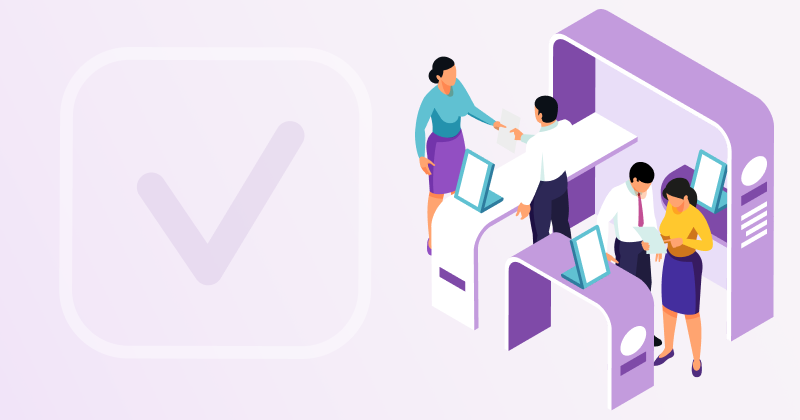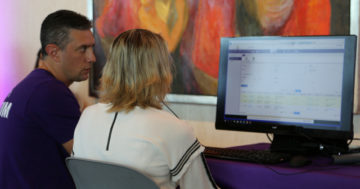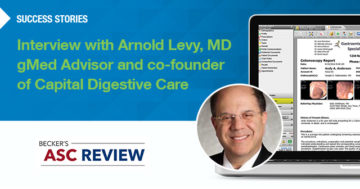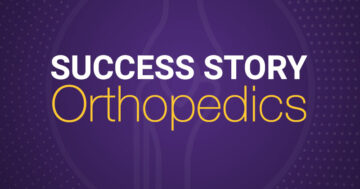Making the Most of Your Time at a Trade Show

Set your objectives, make a loose schedule, and ask plenty of questions during and after the show
Attending a medical trade show can be a great opportunity to learn about new products, network with other professionals, and stay up to date with the latest trends in the industry. For many physicians, these shows make it easy to see electronic health records (EHR) systems, ask questions and engage in conversations with brand representatives.
The ability to compare EHRs, practice management systems and patient engagement tools can also help spotlight features, use cases, cost efficiencies and new ways of streamlining your operations.
Here are a few tips to help you make the most of your time at a medical trade show.
Plan what you want to achieve
Before the trade show, review the exhibitor list and the schedule of events to plan which exhibits and sessions you want to attend.
The leading trade shows and conferences are likely to feature a wide variety of innovators, products, sessions, panels and parties. You may not be able to see everything — or need to — so focus on the areas that are most relevant to your interests and needs.
- Download any conference-related mobile apps.
- Review maps, agendas and other event materials.
- Discover which exhibitor booths you want to visit.
- Prioritize whom you’ll visit based on your needs.
- Create an approximate schedule for each day.
- Prepare questions or requests for brand representatives.
Leave time for walking around and networking, too. Exposition halls can be massive, and there may be lots of interesting booths, new brands, products and people you don’t know about until you arrive.
You may also find an opportunity for organic interactions after sessions. While learning about new tools or topics, attendees may share experiences and insights that drive greater understanding of what’s trending in your specialty.
Check out new products and demos
Trade shows are ideal for demonstrations of products that interest you. While each practice may have different needs, you may benefit from a simple checklist while shopping for EHRs. For example, consider these questions:
Is the EHR specialty specific? Specialty workflows can streamline many of your daily tasks and help you optimize your practice to meet goals and focus on the highest quality care possible.
Does the company offer an all-in-one solution? All-in-one solutions can help limit the risks involved in stitching together multiple systems, save you time and energy, and help you focus on patient care.
What is the full scope of the EHR’s capabilities? This may be a broad question, but it’s important to shop for features like immediate readiness for use and all-in-one solutions that include revenue management, analytics, interoperability and more.
Is the solution mobile? Solutions that are available on your tablet give you the flexibility to run your practice in ways that work for you.
Is the EHR cloud based or server based? Cloud software is usually easier to scale than server-based software. Using cloud solutions can also help limit capital expenses, like hardware and a team to manage it.
What patient engagement tools are available? Patient engagement tools can help get patients more involved in their own care while reducing burden on your staff.
What level of training and support is available? Some companies have an IT team that trains clients, but access to real team members with real-world clinical experience in your specialty can be a game changer.
You can adjust this checklist based on your specialty, geography, patient volume and growth plans. It can be smart to conduct an internal survey, even informally, around what needs your staff have, too.
Capture information for review
With so much activity at trade shows, you can make the most of it by determining a system for capturing information you learn each day.
Depending on your personal preferences, this might be a notebook, the notes app on your phone, or a way to store and share materials you gather at booths. Some conference apps include additional resources, too.
You can also create a folder of favorites on your phone to compile digital assets. Add websites, PDF brochures, contact forms, LinkedIn profiles and other URL-based information. If you have your devices set up to share between your phone and tablets or desktops, this can make it simple to review materials once the trade show is over.
Stay connected
After the trade show, follow up with brands and individuals that you met. Your actions after the show can help solidify new networks and build the type of rapport that supports new opportunities, proposals, special requests and negotiations.
- Follow brands on LinkedIn to learn more about their offerings.
- Participate with your own insights in online conversations.
- Send messages to people you connected with individually or through colleagues.
- Make additional introductions between your staff and any new connections.
- Ask questions or make requests of brand representatives to learn more.
By following these tips, you can make the most of your time at medical trade shows and come away with valuable insights, new contacts and new ideas to help you maintain a modern practice.
Want to connect with ModMed at the latest industry shows and conferences? View our schedule here.


